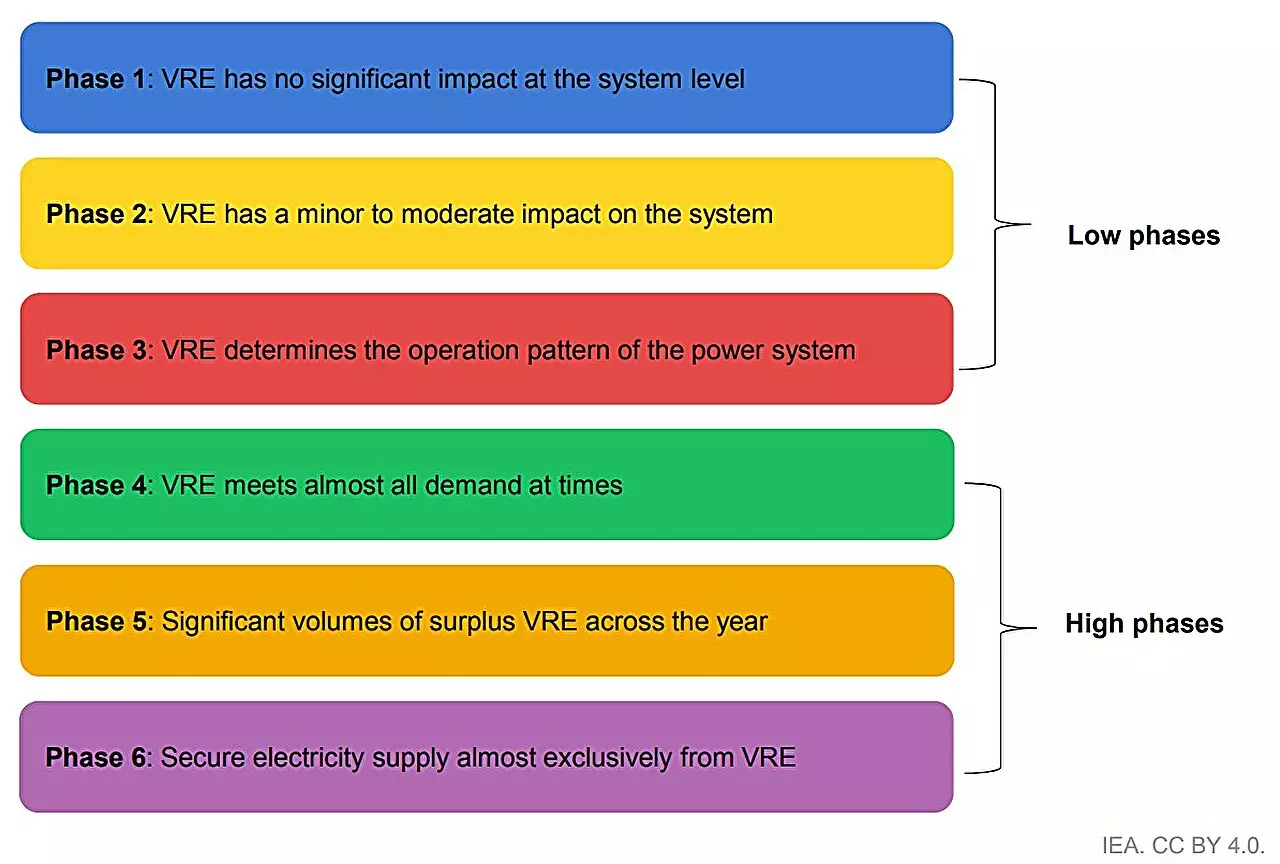The global shift towards renewable energy, particularly solar photovoltaic (PV) and wind power, is gaining unprecedented momentum. Recent data shows that between 2018 and 2023, the capacity of these sources has more than doubled, supporting a substantial share of electricity generation globally. However, while this growth presents a tremendous opportunity for tackling climate change and enhancing energy security, it simultaneously introduces a significant challenge: the need for effective integration of these variable renewable energy (VRE) sources into existing power systems. A recent report from the International Energy Agency (IEA) outlines these challenges and emphasizes the necessity of strategic actions from governments to fully harness the benefits of this clean transition.
The IEA report, titled “Integrating Solar and Wind: Global Experience and Emerging Challenges,” pinpoints the crucial need for a well-planned integration strategy as nations march toward ambitious climate goals. Without timely and robust integration measures, the report warns, global electricity generation from solar and wind could face staggering losses — up to 15% lower by 2030. This would directly impact their contributions to the global electricity mix, lowering their share by five percentage points. Thus, immediate action is not merely advisable; it is imperative.
The report elaborates on how integrating VRE into power systems requires a departure from traditional planning and operational approaches. With the current pace of deployment, there is a pressing need to rethink how energy systems are designed to incorporate large shares of renewables, which are inherently more variable than conventional energy sources.
What sets this IEA report apart is its unprecedented global stocktake of integration measures across 50 power systems, representing around 90% of current global solar PV and wind generation. This comprehensive analysis reveals a variety of strategies that countries can employ without needing extensive system-wide overhauls. Countries that are still in the early stages of integrating VRE can often experience significant growth simply by enhancing the flexibility of their existing energy resources and improving their forecasting capabilities. These relatively straightforward tactics, deployed gradually in accordance with demand, have consistently proven to be effective.
However, as countries increase their reliance on solar and wind, they face more complex issues that necessitate innovative responses. Frontrunner nations such as Denmark, Ireland, South Australia, and Spain have demonstrated that it is possible to overcome these integration hurdles. Their strategies include developing advanced storage solutions and upgrading power grid technologies to manage the fluctuations associated with renewables across different times of the day and various seasons. This calls attention to an essential point: the technological solutions needed to accommodate higher levels of VRE are either already available or are advancing rapidly.
While many technological innovations are on the verge of maturity, the successful implementation of these solutions often hinges on effective policy and regulatory frameworks. The IEA report emphasizes that it is not always about discovering new technology; sometimes, it is about facilitating existing technologies’ deployment through supportive policies. Governments play a critical role in creating an environment conducive to innovation and adaptation within the energy sector.
The urgent task for these governments is to craft policies that prioritize stability and flexibility within their energy systems. As nations continue to ramp up their renewable energy capabilities, the importance of proactive measures cannot be overstated. By strategically aligning their regulatory frameworks to support renewable integration, governments can ensure a smoother transition toward a sustainable energy future.
The accelerating growth of solar PV and wind energy presents both an extraordinary opportunity and significant challenges for policymakers around the globe. The recent IEA report underscores the necessity of integrating these technologies into existing power systems to avoid potential losses in generation capacity and to maximize their environmental benefits. As we navigate the complexities of clean energy transitions, it is imperative for governments to take decisive action to reshape their energy systems, ensuring that the full advantages of renewable energy are realized for a sustainable future. The time is now for an upward shift in commitment, strategy, and execution toward effectively integrating solar and wind into the global energy matrix.

